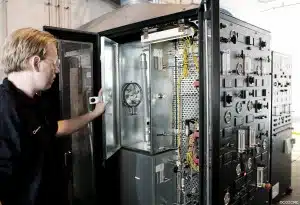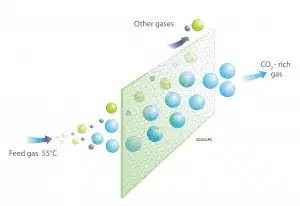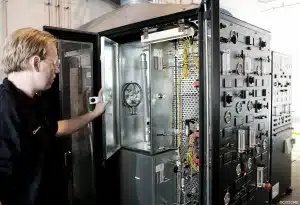High tech cling wraps that ‘sieve out’ carbon dioxide from waste gases can help save the world, says Melbourne University chemical engineer, Colin Scholes who developed the technology.
The membranes can be fitted to existing chimneys where they capture CO2 for removal and storage. They are already being tested on brown coal power stations in Victoria’s La Trobe Valley, Colin says. His work is being presented for the first time in public through Fresh Science, a communication boot camp for early career scientists held at the Melbourne Museum. Colin was one of 16 winners from across Australia.
“The membrane material is specifically designed to separate CO2 from other molecules,” he says. “It acts like a filter and is much more efficient than existing technology. We are hoping these membranes will become an important part of a carbon capture and storage strategy which will cut emissions from power stations by up to 90 per cent.”
Not only are the new membranes efficient, they are also relatively cheap to produce. “Carbon capture and storage is currently very expensive. Reducing the cost of trapping the CO2 will make it much more affordable. And cheaper systems mean power generators can put them in place much sooner.”
Another crucial aspect of the membrane has been its toughness – a power station chimney is not a friendly environment. “Trials with real flue gas have been essential for the development of material robust enough to handle industrial conditions,” Colin says.
“Fossil fuels currently supply 85 per cent of the world’s energy,” says Colin, one of the founders of the Australian chapter of Scientists without Borders. “So despite the urgent need to reduce levels of carbon dioxide in the atmosphere, the International Energy Agency predicts fossil fuels will continue to be heavily used for many years to come. Carbon capture and storage will be an important part of the portfolio of solutions to address climate change including energy efficiency, less carbon-intensive fuels, natural carbon sinks and renewable energy.”
Colin’s work is supported by the Cooperative Research Centre for Greenhouse Gas Technologies where he is a research fellow.
Colin Scholes is one of 16 early-career scientists releasing their research to the public for the first time thanks to Fresh Science, a national program sponsored by the Australian Government. His challenges so far have included presenting his discoveries in verse at a Melbourne pub.
For further information, contact Colin Scholes at cascho@unimelb.edu.au
Additional Images









 Fresh Science is on hold for 2022. We will be back in 2023.
Fresh Science is on hold for 2022. We will be back in 2023.